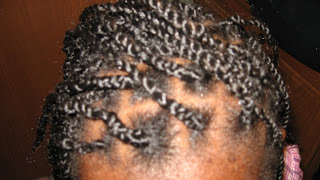I don't think I really understood the term "product junkie" until I became one. As I was trying to stay in the "my hair does not define me" I was working hard to find out what my hair needed in order to be healthy and produce growth.
So, I HAD to become a product junkie. That is when I began my second job: spending hours (on and off of course) on youtube or doing research in magazines or on the Internet learning all that I coud about African American hair. Though I've learned so much, I'm still learning as I continue on this hair journey. The more I learned, the more I wanted to experiment with the effects of the products on my hair.
I want to introduce you to some of the products that I believe have made this journey much easier.
Aphogee
This product has a huge line! But,
DON'T RUSH OUT and buy everything (because being a product junkie can get expensive)! Aphogee was the product I used most often during my transition stages. Before I began my hair journey, I was near balding on the right side of my head, near my temple. Years of wearing my hear in weaves AND perming it (
NOTE: weaving is not altogether a bad thing) had finally done its damage. I was 23 with a thinning hair line and near balding in some areas. I lost the pictures to show you this, but it's really quite neat how much Aphogee contributed to the regrowth of my hair. I'm NOT bald anymore!
The Aphogee products I suggest you purchase and invest in are below (costs range from $5-$7)
Product to the Left: Shampoo for Damaged Hair. Now, you learned from the "Natural Hair Lingo" post that the amount of shampoo used on natural hair is little next to none. But I found this shampoo, during the beginning of my hair journey, to be quite effective in restoring health and strength to my hair.
Directions: You don't need too much; a little goes a long way! When you do put this in your hair, massage your scalp for a minute or two before washing the shampoo out.
Product to the Right: 2 Minute Reconstructor. Honestly, this is really what started to promote the regrowth and growth of my hair. I loved this product! Though I do not use it as often anymore (because my hair is healthier now) I highly recommend it! It's crucuial though that you follow the directions for this product!
Directions: You will need to purchase a shower cap in order for the 2 Minute Reconstructor to work at it's fullest power. Once you put the reconstructor on (you'll need a generous amount), place the shower cap on head. This is a 2 minute process, right? So you should leave it on for 2 minutes, right? Yes and no. When I first began, I followed the directions: 2 minutes only. The more I began to understand my hair, I left it on for longer, usually 5-7 minutes top. No damage ever occurred. Now, if I use it, I will simply do the 2 minutes.
Product to the Left: ProVitamin Leave in Conditioner: This is a liquid, so be careful, it spills out fast! It might be best to pour the contents of this bottle into a spray bottle (also something you might want to consider purchasing...you can also use an old body spray bottle like I did). After your shampoo and 2 minute reconstruction, you need to put a good amount of this leave in conditioner throughout your hair.
Product to the Right: Keratin and Green Tea. This is to be used after the conditioner. Again, spray a good amount in hair.
Directions: After using both products, be sure to massage scalp for 30 seconds to 1 minute.
NOW YOUR HAIR IS WET?????? WHAT DO YOU DO?
1. You can let your hair air dry; however, most of us don' t have time to do that. So...
2. Blow dry it. BUT (and this is a MUST) before you blow dry it, you must PROTECT it!
3. Use a heat protectant ALWAYS before putting any type of heat on your hair.
My Favorite Heat Protectant
CHI Silk Infusion: $25.00 (one of my most expensive products). Worth it? It smells great, protects the hair from heat, leaves hair feeling great, and because a little goes a long way, it has lasted me a little over a year (and I use it on 5 people).
More Cost Efficient: I've tried the other heat protectants below, but CHI is the one my hair loved best!
Cost: $6-$10
4. Once you have your heat protectant on, begin blow drying.
5. Once your hair is near dried or completely dried, let the styling begin.
6.
NOTE: You should not need to put anymore products on your hair at this point (unless it is a gloss or a hair spray to finish).
ALL PRODUCTS CAN BE FOUND AT SALLY'S, some at Target, WalMart, or Meijer.
If you have a local hair store that specializes in Ethnic hair, these products should be avaliable too (and sometimes they will be less expensive or more expensive. You will quickly learn where to go for what).
Next Post:
A Few Styles!

































